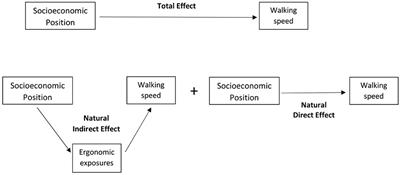|
Αρχειοθήκη ιστολογίου
-
►
2023
(256)
- ► Φεβρουαρίου (140)
- ► Ιανουαρίου (116)
-
►
2022
(1695)
- ► Δεκεμβρίου (78)
- ► Σεπτεμβρίου (142)
- ► Φεβρουαρίου (155)
-
►
2021
(5507)
- ► Δεκεμβρίου (139)
- ► Σεπτεμβρίου (333)
- ► Φεβρουαρίου (628)
-
▼
2020
(1810)
- ► Δεκεμβρίου (544)
-
▼
Νοεμβρίου
(743)
-
▼
Νοε 12
(34)
- Estimation of the Content of Selected Active Subst...
- Analysis of a Fractional Reaction-Diffusion HBV Mo...
- Using the Robson Classification to Explain the Flu...
- Maternal Deaths due to Obstetric Haemorrhage in Do...
- Can Mobile Technology Help Prevent the Burden of D...
- Lifetime Duration of Exposure to Biomechanical Fac...
- Genome‐wide search for genes affecting the age at ...
- Application of spectral CT in the diagnosis of con...
- Vaccines, Vol. 8, Pages 673: SARS-CoV-2 Proteins I...
- Metastatic Human Epidermal Growth Factor Receptor ...
- Vaccines, Vol. 8, Pages 674: The Impact of Serotyp...
- Validation of a Modified CDC Assay and Performance...
- Vaccines, Vol. 8, Pages 675: Association between E...
- Vaccines, Vol. 8, Pages 676: Multiple Vaccinations...
- Inner retinal dehiscence and macular microhole sec...
- Haemophagocytic lymphohistiocytosis that spontaneo...
- An Exploratory Study of the Relative Effects of Va...
- The Need for Ocular Protection for Health Care Wor...
- Protocol for a case-control study of vitamin D sta...
- Fibrosis-4 index as a predictor for mortality
- Prevalence and predictors of poor sexual well-bein...
- Comparing intranasal 1.4 mg to intramuscular 0.8 m...
- Translating the Symptom Screening in Paediatrics T...
- Treatment with the anti-IgE monoclonal antibody om...
- Thromboelastography-guided blood transfusion durin...
- Life-threatening corrosive injury with hepato-rena...
- Antithrombotic therapy and the risk of new-onset d...
- The starry sky of tuberculoma
- Cystinuria
- Haemolytic crisis of hereditary spherocytosis
- Effects of the Mediterranean diet adherence on bod...
- Improving postoperative mobilisation rates in pati...
- 'The photographic negative of pulmonary oedema in ...
- Iatrogenic extracranial internal carotid artery an...
-
▼
Νοε 12
(34)
- ► Σεπτεμβρίου (32)
- ► Φεβρουαρίου (28)
-
►
2019
(7684)
- ► Δεκεμβρίου (18)
- ► Σεπτεμβρίου (53)
- ► Φεβρουαρίου (2841)
- ► Ιανουαρίου (2803)
-
►
2018
(31838)
- ► Δεκεμβρίου (2810)
- ► Σεπτεμβρίου (2870)
- ► Φεβρουαρίου (2420)
- ► Ιανουαρίου (2395)
-
►
2017
(31987)
- ► Δεκεμβρίου (2460)
- ► Σεπτεμβρίου (2605)
- ► Φεβρουαρίου (2785)
- ► Ιανουαρίου (2830)
-
►
2016
(5308)
- ► Δεκεμβρίου (2118)
- ► Σεπτεμβρίου (877)
- ► Φεβρουαρίου (41)
- ► Ιανουαρίου (39)
Αλέξανδρος Γ. Σφακιανάκης
ΩτοΡινοΛαρυγγολόγος
Αναπαύσεως 5
Άγιος Νικόλαος Κρήτη 72100
2841026182
6032607174
Πέμπτη 12 Νοεμβρίου 2020
Lifetime Duration of Exposure to Biomechanical Factors at Work as a Mediator of the Relationship Between Socioeconomic Position and Walking Speed
Εγγραφή σε:
Σχόλια ανάρτησης (Atom)



Δεν υπάρχουν σχόλια:
Δημοσίευση σχολίου